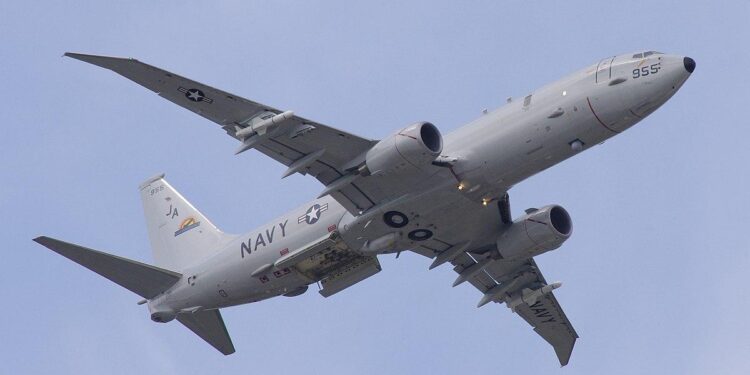Germany has officially taken delivery of its first P-8A Poseidon maritime patrol aircraft, marking a significant enhancement in the country’s naval reconnaissance and anti-submarine warfare capabilities. The state-of-the-art aircraft, acquired from the United States, is set to bolster the German Navy’s ability to monitor and secure its maritime interests amid evolving geopolitical challenges. This milestone delivery underscores Germany’s ongoing commitment to modernizing its defense forces and strengthening cooperation with NATO allies.
Germany Strengthens Maritime Surveillance with Arrival of First P-8A Poseidon
Germany’s maritime capabilities have received a significant boost with the induction of its first Boeing P-8A Poseidon, a state-of-the-art maritime patrol aircraft designed for anti-submarine warfare, reconnaissance, and surveillance missions. This advanced platform replaces the aging P-3C Orion fleet, offering enhanced range, payload capacity, and sensor integration to address evolving threats in the Baltic Sea and North Atlantic regions. The aircraft’s arrival marks a critical step in modernizing the German Navy’s reconnaissance framework, ensuring stronger maritime domain awareness and improved response times to potential security challenges.
Equipped with cutting-edge technologies, the P-8A offers a comprehensive suite of capabilities, including:
- Multi-sensor integration: Sonar buoys, radar, and electro-optical sensors enable multi-dimensional threat detection.
- Extended range: Over 4,500 nautical miles of operational endurance for sustained missions.
- Advanced communications: Secure satellite and data link systems for real-time intelligence sharing.
| Capability | Specification |
|---|---|
| Max Speed | 907 km/h |
| Range | 4,500+ nautical miles |
| Crew | 9 personnel |
| Armaments | Harpoon missiles, torpedoes |
Enhanced Capabilities to Boost NATO’s Maritime Security in the Baltic Region
Germany’s acquisition of the first P-8A Poseidon maritime patrol aircraft marks a significant advancement in NATO’s surveillance and defense posture across the Baltic Sea. This state-of-the-art platform is equipped with cutting-edge sensors and communication systems, allowing for extended maritime patrols, enhanced anti-submarine warfare, and real-time intelligence sharing with allied forces. The aircraft’s capabilities will fortify maritime domain awareness against evolving threats, from covert underwater movements to surface vessel monitoring, ensuring rapid response to any emerging security challenges.
Key features of the P-8A include:
- Advanced sonar and radar systems for comprehensive detection and tracking.
- Multi-mission flexibility supporting anti-submarine warfare, anti-surface warfare, and search-and-rescue operations.
- Long-range endurance enabling prolonged missions over critical maritime zones.
- Integration with NATO command networks for seamless coordination and data exchange.
| Capability | Benefit |
|---|---|
| Multi-static Sonar | Improved submarine detection |
| Electro-Optical/Infrared Sensors | Enhanced day/night surveillance |
| Data Link Connectivity | Real-time NATO information sharing |
| Extended Flight Time | Increased coverage area |
Recommendations for Integrating P-8A Assets into Germany’s Naval Operations
To maximize the strategic impact of the newly acquired P-8A Poseidon aircraft, it is essential for German naval command to enhance interoperability with existing maritime assets. This involves developing joint training programs that integrate P-8A crews with frigate and submarine units, ensuring seamless coordination in anti-submarine warfare (ASW) and maritime surveillance missions. Furthermore, real-time data sharing protocols must be updated and reinforced, capitalizing on the Poseidon’s advanced sensors and communication suites to deliver near-instantaneous tactical intelligence across all platforms.
Investment in specialized infrastructure at key naval bases will also be critical for support and maintenance of the P-8A fleet. Recommended priorities include:
- Upgrading hangar facilities to accommodate the Poseidon’s size and tech.
- Establishing dedicated mission planning and debrief centers equipped with cutting-edge analysis tools.
- Expanding logistics and supply chains for rapid availability of spare parts and munitions.
| Integration Aspect | Action Item | Timeframe |
|---|---|---|
| Training | Joint Exercises with Surface and Submarine Units | 6-12 months |
| Communication | Upgrade Real-Time Data Sharing Networks | 3-6 months |
| Infrastructure | Hangar and Maintenance Facility Expansion | 12-18 months |
Final Thoughts
The arrival of Germany’s first P-8A Poseidon marks a significant enhancement in the country’s maritime surveillance and anti-submarine warfare capabilities. As the Luftwaffe integrates this advanced platform into its fleet, it underscores Germany’s commitment to strengthening NATO’s collective defense in the strategically vital Baltic and North Sea regions. With further deliveries expected in the coming years, the P-8A will play a crucial role in bolstering maritime security amid evolving global challenges.
















